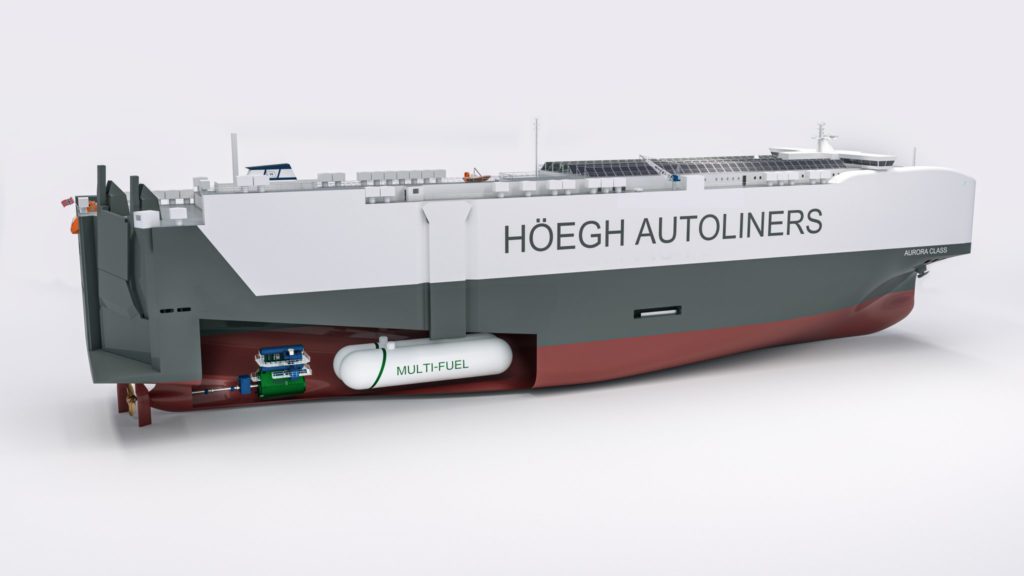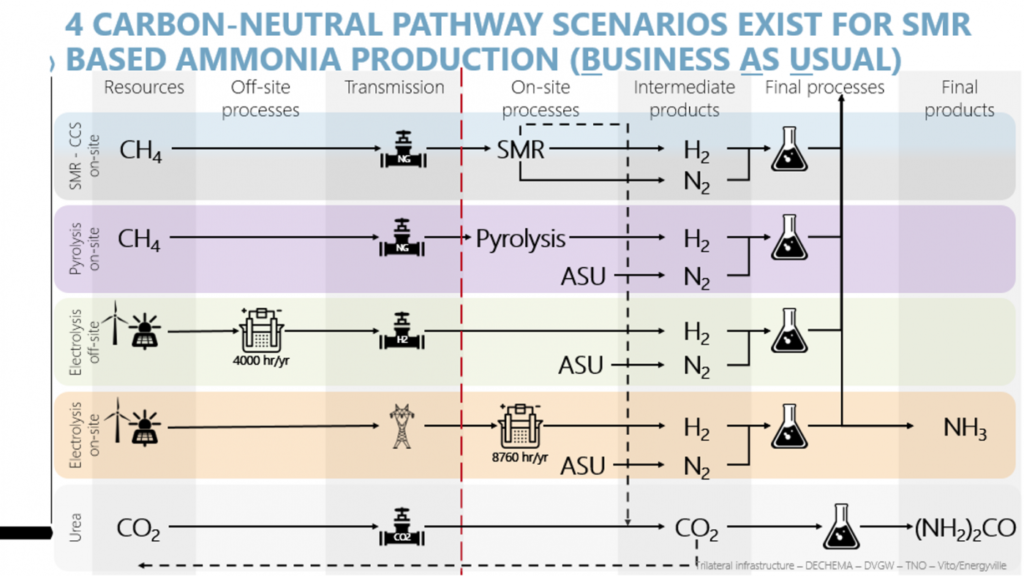The Ammonia Wrap: “Ammonia-Prepared” notation for new build vessels, new collaboration between Yara and JERA, and a need for cross-border cooperation to decarbonise ammonia production in the EU
By Julian Atchison on May 20, 2021
Welcome to the Ammonia Wrap: a summary of all the latest announcements, news items and publications about ammonia energy. There’s so much news this edition that we’re bringing you two, special Wrap articles. Our second focuses on maritime ammonia & supply chain development.
Bureau Veritas releases “Ammonia-Prepared” notation

Applicable to new build vessels, the new “Ammonia-Prepared” notation from BV signals the vessel has been designed and constructed so it can eventually be converted to use ammonia as a fuel. Storage tank requirements, safety measures, incident response systems & engine conversion will all be addressed in the full technical guide, to be available later in 2021. BV has also released a new Rule Note for the use of ammonia as a marine fuel, mainly focused on safety aspects (this new Rule Note – NR671 – will be available July 1).
Höegh Autoliners’ ammonia-powered car-carrier to hit the water by 2023

Höegh Autoliners’ Aurora Class car-carrier features a MAN ES multi-fuel engine designed to run on various biofuel and conventional fuels, with minor modifications required to run on ammonia in the future. In partnership with Xiamen Shipbuilders and with DNV’s new ammonia-ready notation, the first Aurora Class vessel will hit the water by 2023.
Yara and JERA to collaborate
Yara and JERA will collaborate to develop a supply chain of blue and green ammonia between Australia and Japan. Yara will provide ammonia for power generation in Japan (coal co-combustion), and under the MoU will explore opportunities to sequester already-captured carbon dioxide at their Pilbara production plant in Western Australia. Green ammonia production at the Pilbara plant received a significant boost earlier this month, with the Australian Renewable Energy Agency providing government funding for the construction of the YURI project, a dual undertaking between Yara and ENGIE.
Japan’s Kobe Port moves towards hydrogen and ammonia
Japanese shipping firm Mitsui OSK Lines (MOL) and engineering firm Mitsui E&S Machinery have agreed on a feasibility study to explore powering cargo-handling equipment and vehicles at Kobe Port with hydrogen fuel. The study will also look at developing import capacity for ammonia to be used in coal co-combustion at the nearby Kobe steel mill and grid power generators as the Port, Kobe City and the wider Hyogo Province embark on a decarbonisation push.
New partners for Itochu / Vopak study in Singapore

There are new partners on board for Itochu and Vopak’s feasibility study for ammonia fueling at Singapore: Total, MOL and Pavilion Energy. Under the MoU, the shipping firm MOL will promote the development of an off-shore ammonia fuel storage facility and/or bunkering vessels, while Pavilion and Total will develop supply chains and infrastructure based on their extensive experience with LNG at the Port of Singapore.
New Voltachem ammonia study shows need for cross-border cooperation in EU
And a new case study from Voltachem concludes that cross-industry and cross-border cooperation is needed to fully decarbonise ammonia production in the EU. Taking three conventional ammonia production sites in Belgium, the Netherlands and Germany as a baseline, converting existing infrastructure to carbon-neutral alternatives via a number of different technological pathways will require urgent, coordinated action, but is definitely achievable. The full paper is available here.
Sign up for weekly AEA updates
Make sure you’re signed up for AEA email updates, including our weekly newsletter featuring wrap articles just like this one.
